Recently, I was entrusted with choosing my friend’s first-ever anime. Rather than move toward the usual gateway anime like Attack on Titan, Death Note, or Fullmetal Alchemist: Brotherhood, I decided to pick Chainsaw Man, what with my friend’s love for film and things that are a little fucked up. Living vicariously through their first anime (which was a success, I might add) motivated me to spin the block on my first anime. A show I never finished, and for decades didn’t know the name of, until I rediscovered it.
Unlike my friend, who could boot up endless streamers to dive into oceans of anime, my first show was a random encounter on Toonami. It was also my earliest memory: One night, when I was five, while channel surfing on my grandmother’s TV, I saw it. It wasn’t Dragon Ball or Inuyasha. It was dark, bloody, mechanical. I only caught the tail end of the show before my grandmother, after filling my belly with collard greens and cornbread, grabbed her broom to knock on the ceiling—her signal to my mom, upstairs in our unit. I was sent back upstairs to go to bed, never learning the show’s name.
All I knew of its premise was that it followed a wandering android, in love with his creator’s daughter, battling other androids. For decades, it was my nameless Moby Dick. At 23, frustrated I still hadn’t recalled it, I combed the Toonami wiki, clicking through every show broadcast from my childhood, hoping one blue hyperlink would lead me back to the glow of that CRT. Nothing. So I did what anyone would do: I turned to r/anime and asked the following:
“When I was a kid I vaguely remember this anime about this cyborg dude who'd sort of wander from town to town. The only plot point I can remember is that he was in love with his creator’s daughter. I know this is vague but I'm 23 and this has been bothering me for 17 years! Please internet do your magic!”
After a couple of folks gave me suggestions for my admittedly opaque synopsis such as Casshern Sins and Gun x Sword, one user finally said:
“I don't really remember him being in love, but perhaps it was Android Kikaider: The Animation? That's the only old school show about a cyborg that I could remember being on Toonami.”
Android Kikaider: The Animation. At long last. A name.

What did I do after uncovering the title of my long-lost, first-ever show? I didn’t watch it. Not until my 29th birthday, when I found all 13 episodes online and finally gave it a whirl, front to back, with the fully developed brain of someone who’s seen countless anime since. Was it worth all the anguish of having lost it and the accolade of being my first? Long story short: it still hits. Short story long: even that brief childhood glimpse forever shaped my taste in storytelling.
Android Kikaider: The Animation, animated by Radix and Studio OX, is a dark sci-fi mecha show. Turns out, having hit credits, my murky synopsis of the show wasn’t far off. Its premise is basically a short walk from Astro Boy, with a heavy-handed Pinocchio-meets-Frankenstein vibe.
It follows Jiro, a guitar-carrying android created by an enigmatic robotics professor, Dr. Komyoji, with the unique ability to feel human emotions thanks to a “conscience circuit” (or a Jiminy Circuit in the manga). The whole thrust of the show sees him struggle with morality and free will, protecting Komyoji’s children, Masaru and Mitsuko, and battling an evil organization called the Dark, which seeks to control him to achieve world domination. How they plan to do so is by having a rival, Dracula-looking robotics engineer play a devil’s flute to mind-control Jiro into doing bad things like choking Mitsuko or hurting passersby, whilst having him fight sibling robots without morality chips to the death every episode.
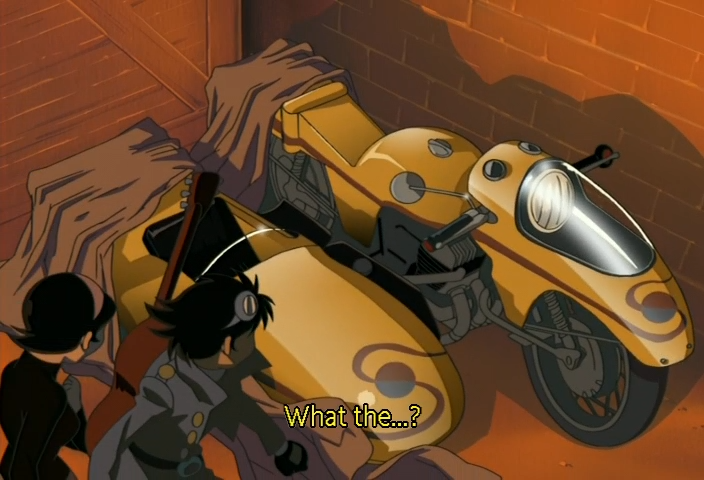
Off the bat, Android Kikaider: The Animation felt like a show smack dab in the center of a four-quadrant Venn diagram of my special interests: Kamen Rider, Pluto, Ultraman, and Power Rangers. Turns out my knee-jerk reaction to that wasn’t unfounded, because the anime was based on Shotaro Ishinomori’s 1970s manga series; Ishinomori is “The King of Manga” and the creator of Cyborg 009, Kamen Rider, and Super Sentai. He also happened to be an assistant to the “Godfather of Anime,” Astro Boy creator Osamu Tezuka. An added irony is that shortly after Ishinomori’s passing, Kamen Rider revived itself with Kamen Rider Kuuga, my first foray into the series. Even from a young age, Baby Isaiah stumbled upon peak.
The show has everything:
- Soft, rounded character designs that are relics of a bygone era
- Sophisticated cel animation with Neon Genesis Evangelion-style cut editing
- A rival character voiced by the incomparable Steve Blum
- A dreamlike soundtrack by Akira Mitake
- A mesmerizing ending theme, “Destiny” by Yui Horie, that feels like stumbling into a hidden fae forest… that’s underwater…in a derelict video game water level. Girlie put her foot in it in the booth, making a serene, haunting, and somehow perfect song for Android Kikaider.
What I appreciated about Android Kikaider, aside from being my first foray into anime, was how it was packaged as a complex moral drama about the opacity of human nature and mechanical prompts. Things the show wasted no time diving into in its premiere episode in a matter-of-fact yet poignant way. In it, Jiro stumbles upon two boys whose model plane is stuck in a tree. He decides to help get it down by pushing the tree down, much to their abject horror. Not because of his physical feat in expediting the process, but because his brutish problem-solving resulted in toppling a bird’s nest and cracking the eggs inside.
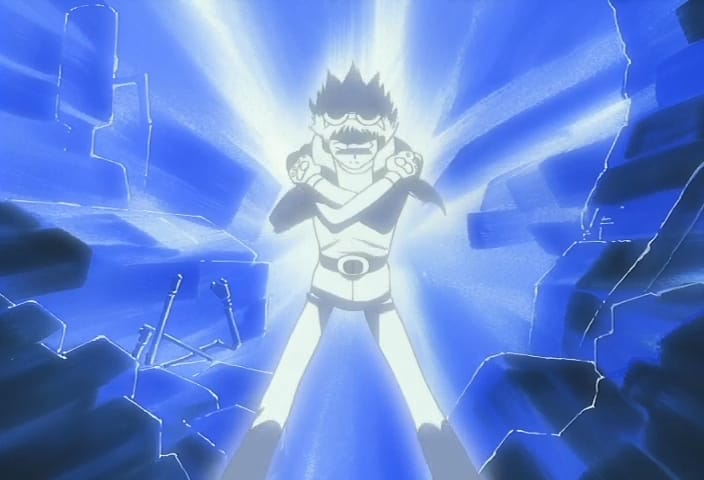

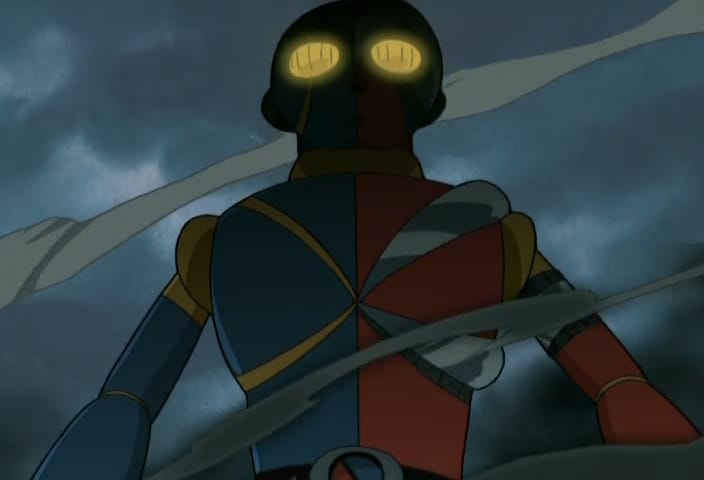
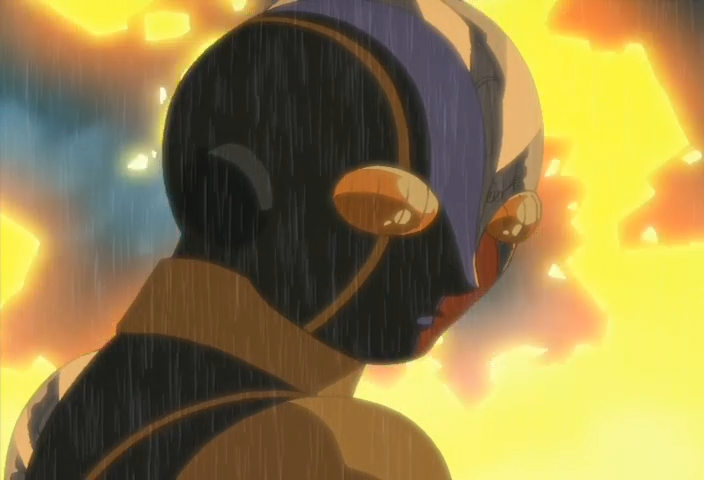
Henshin! (Image: Radix/Studio OX/Bandai Entertainment/Adult Swim)
For me, then and now, his transformation was captivating—my first exposure to the trope before DBZ, Inuyasha, or Sailor Moon. Unlike glittery, glamorous transformations, his seemed painful. Each episode, I watched as robotic lines beneath his eyes looked like streaks of tears, his skin tearing apart to reveal the translucent, Game Boy Color-like endoskeleton underneath. His orange oval eye, blank and lonely, glowed against the flames of destroyed enemies, craving connection and a sense of self—not just empirically, but emotionally.

The show is very on the nose with its themes and its whole Pinocchio premise, which it folds into its narrative as a fairy tale juxtaposed to its own cyberpunk Frankenstein story. This foil becomes even more debaucherous as the anime marches on, revealing that Android Kikaider’s Geppetto is Dr. Komyoji. He is damned for creating a powerful automaton with free will and emotions. The more the show drip-feeds viewers about the why of it all, the grayer the moral tightrope Jiro walks with Dark and Mitsuko at his heels, and whether being more human or more robotic is the worst outcome for him. Unfortunately for Jiro, the road ahead of him, reckoning with his conscience, is a hard one.
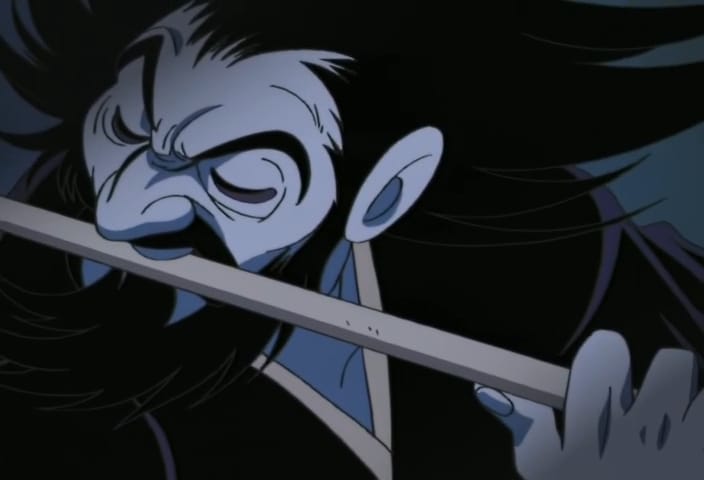
“While it may work with humans, it would be impossible for sympathy to form into love between a human and a machine.”
Jiro spends most of the show as a stray. Mitsuko searches for him, hoping to fix him, while his robot “siblings” try to kill him. Along the way, the latter don’t hesitate to murder bystanders. One spider android crushed a couple making out in their car by constricting them with its webs for no apparent reason. All the while, Jiro is gaslit by both sides, told he’s malfunctioning, or mind-controlled by a “devil whistle” that overrides his consciousness and forces him to do bad things like choke Mitsuko (very often) or harm innocent people, only for him to snap out of it and be cursed as a mad machine.
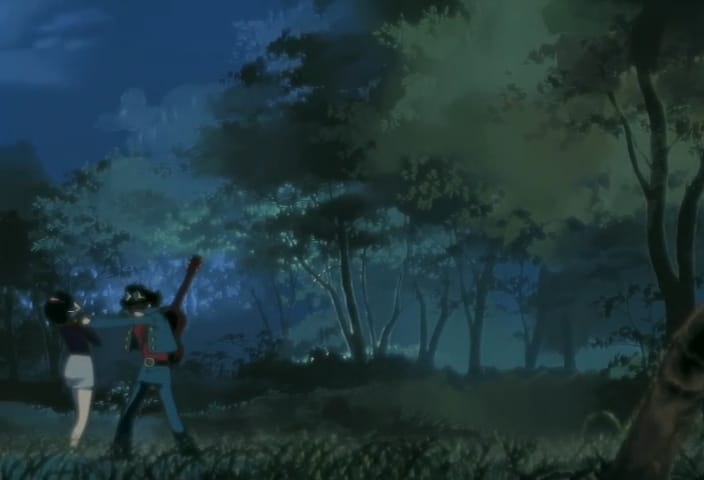
Episode two was my “hell yeah, I’m in” moment. In it, Jiro rejects the vague distinctions between good and bad orders. After a flute slip-up leads him to choke Mitsuko, ruining their moonlit evening by the lake, she resigns herself to destroying him. He indignantly refuses, declaring that if he’s already branded a mad machine, he’ll live on his own terms and define those parameters himself.
“The puppet his father created was only a machine. He could smile tenderly, had eyes filled with sadness… He possessed words to express his loneliness. But he was still a machine made of cold, hard metal, and the girl could not forgive that.”
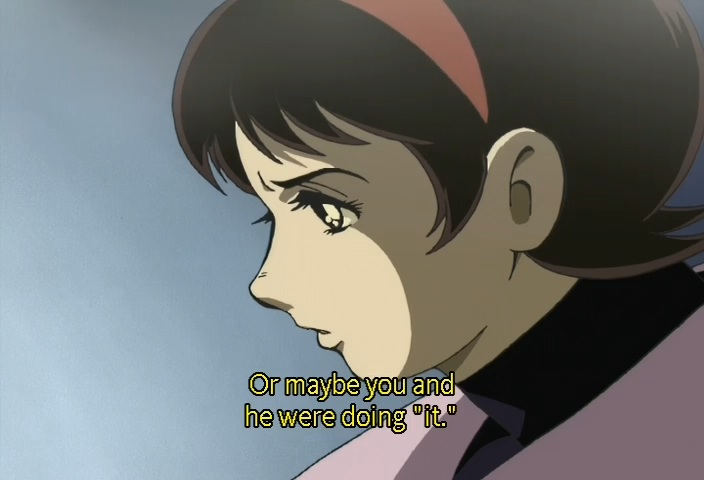
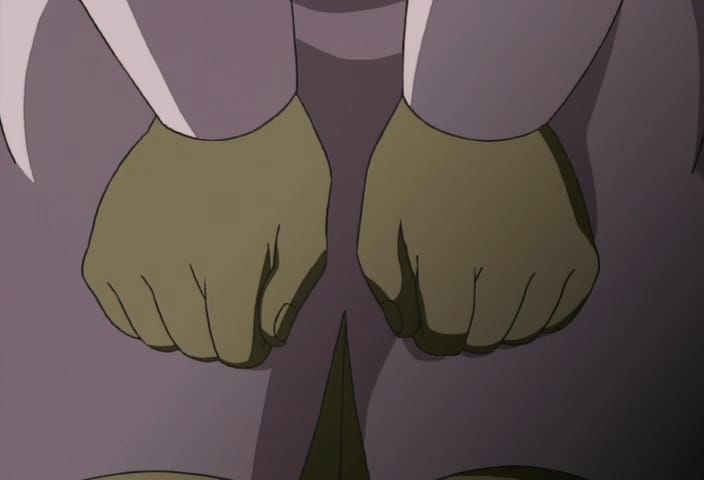
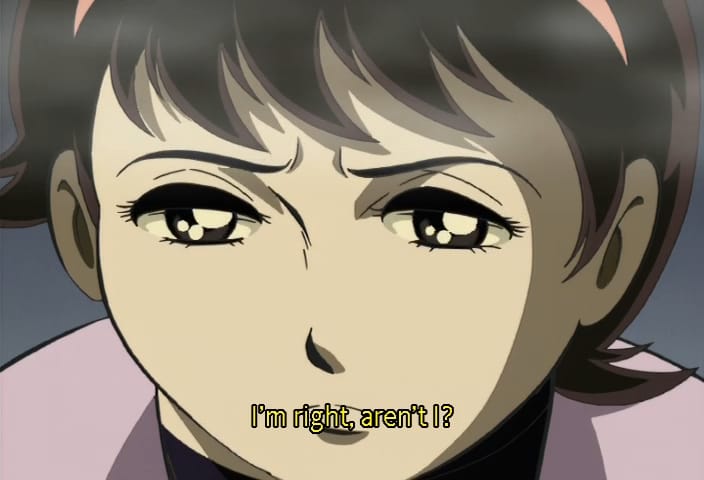
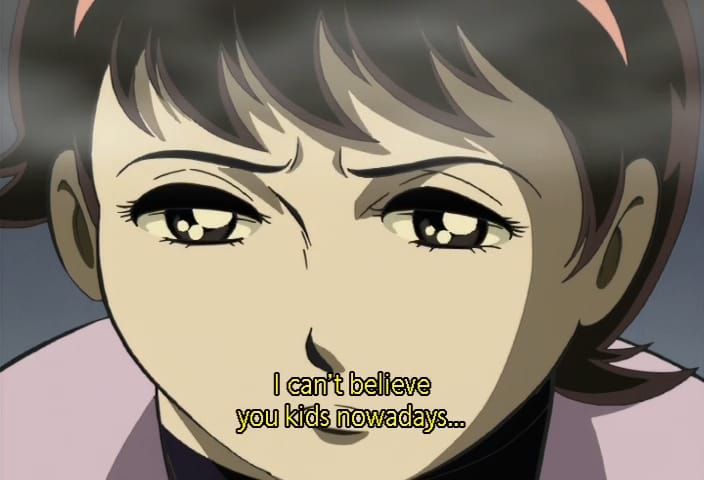
That was loud. (Image: Radix/Studio OX/Bandai Entertainment/Adult Swim)
With the mature eyes of an adult, their romance was less mutual yearning than my child brain assumed—messy, fraught, tumultuous. Mitsuko treats him like we treat AI, short of calling him a clanker, while her brother edges toward humanizing him. To be fair, Jiro’s eyes go red, and he strangles her Eva Unit 01-style. Contrariwise, he’s two days old, and Mitsuko insists she must destroy him because she believes he’ll inevitably turn evil. Mitsuko knows his components, sees him as dangerous—a nature vs. nurture dilemma with a humanoid robot. Something “practically human,” which resonated with me as a kid in a Lutheran setting, knowing the right words to say at Bible school but not feeling them in my spirit. There’s still yearning there. Hell, cops accuse her of being an android fucker while grilling her in their interrogation room. And falling for your creator’s daughter, who is also mulling over destroying you, is a deal breaker by any metric. Jiro and Mitsuko are complicated (read: that messy, good shit I come for).
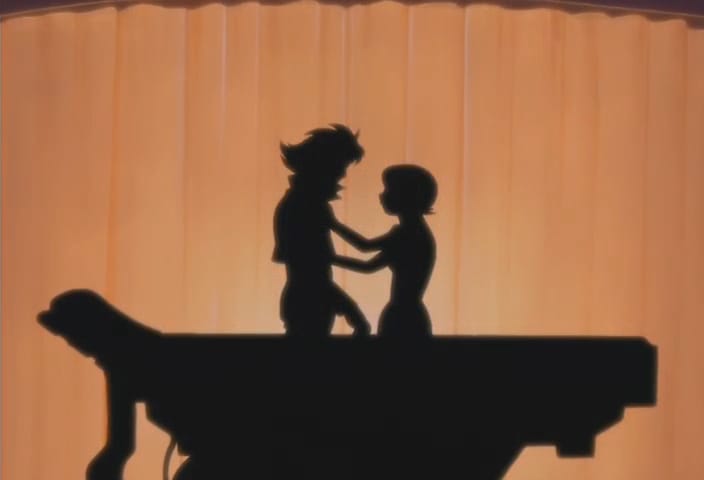
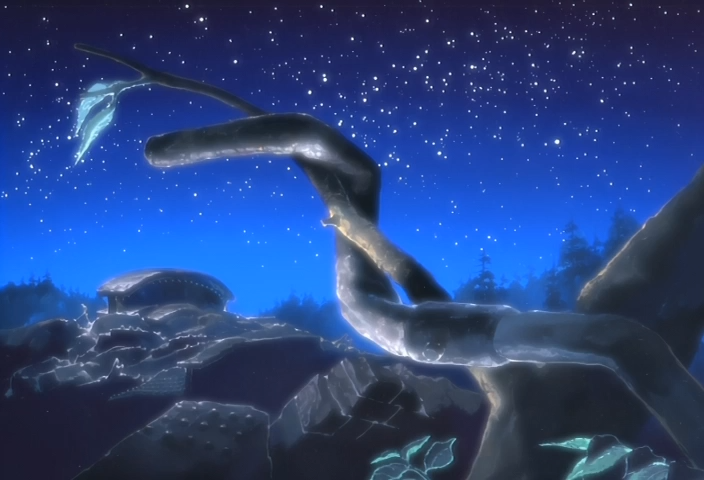
I brought you a metaphor. (Image: Radix/Studio OX/Bandai Entertainment/Adult Swim)
“It's not the guitar that's broken. You just gotta know how to pick it.”
The more I watched Android Kikaider, the more I realized how even my brief childhood exposure had shaped the tropes I love. Tales of self-actualization in Vinland Saga—where Thorfinn wrestles with the cycles of violence and the burden of becoming more than a weapon—echo Jiro’s struggle with his conscience circuit. Vagabond’s wandering swordsman Miyamoto Musashi, searching for meaning beyond the blade, mirrors the lonely path of an android trying to define himself. The seemingly aimless battle-of-the-week journeys of Trigun, where Vash’s pacifism collides with the world’s cruelty, felt like cousins to Jiro’s weekly confrontations with siblings, prompted to embody every shade of destruction. It was stark to witness how all my favorite stories had inroads with Android Kikaider’s thematic explorations of self-discovery, implicit bias, moral quandaries, and the tightrope between who you are and who others demand you be.
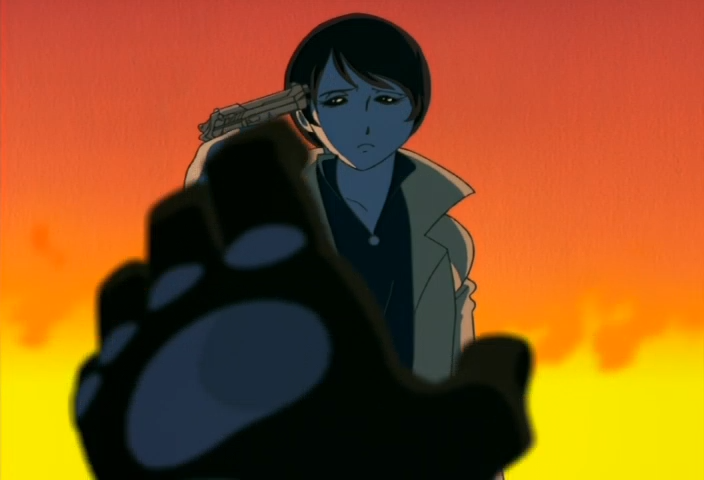
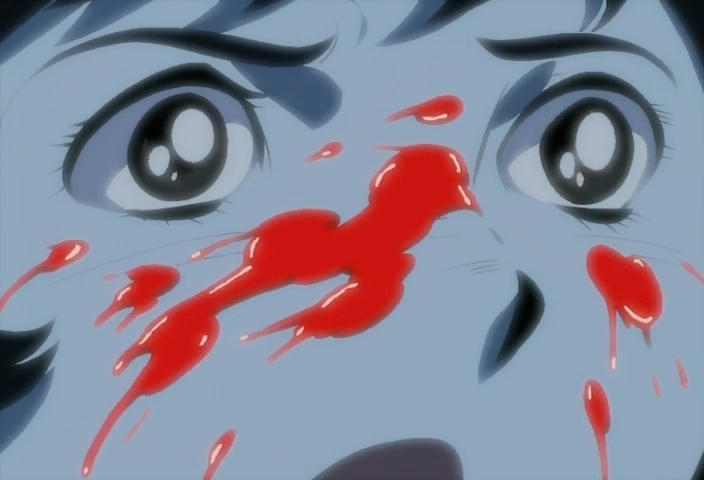
Did I mention Android Kikaider has an ample serving of generational trauma? (Image: Radix/Studio OX/Bandai Entertainment/Adult Swim)
Even Android Kikaider’s visual language—a pastiche of mechanical aesthetics of the early aughts, still ahead of its time, resembling TV-quality versions of Tezuka’s Metropolis—sophisticatedly illustrates machines rendered with beauty and menace, a reminder that technology can be salvation or damnation depending on its application.
And then there’s the cool factor of Jiro’s raw transformation, superpower moves, and him being a wandering android kitted out with a guitar he plays sorrowful music from despite being “unfeeling:” all ironically unconscious inspiration behind the concept of a bard I’ve had in my back pocket for whenever my friends' D&D campaigns finally take flight.
To my delight, the episode I first stumbled upon was Episode 4, “Mirror”—a vertical slice of the entire show. In it, Jiro embodies the series’ core conflict, reluctantly battling another android experiment stripped of free will, and mourning the senselessness of their fight. In retrospect, Jiro’s the inverse of Chainsaw Man’s Denji. Much to think about.
It's rare to look back on one’s first anime and relish in it actually being as good as you remembered it. I’m fortunate that my first anime was a haunting, pensive, and timeless show like Android Kikaider.




